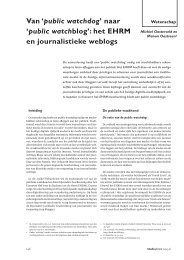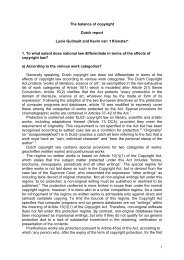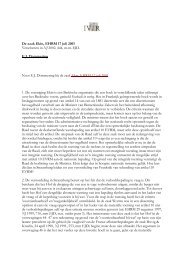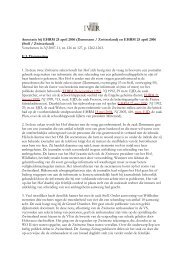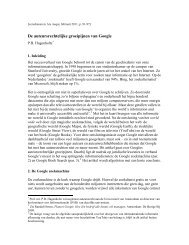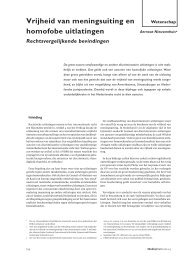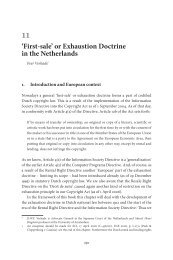ADAPTING COPYRIGHT TO THE INFORMATION ... - IViR
ADAPTING COPYRIGHT TO THE INFORMATION ... - IViR
ADAPTING COPYRIGHT TO THE INFORMATION ... - IViR
You also want an ePaper? Increase the reach of your titles
YUMPU automatically turns print PDFs into web optimized ePapers that Google loves.
European Convention on Human Rights would be unduly restricted by such an allencompassing<br />
right.<br />
Proponents of an exclusive right of screen display, however, argue that the screen<br />
display of a protected work is comparable to an act of `printing' in the paper world. 26<br />
Indeed, a work wholly or partly displayed on screen can be permanently stored or<br />
printed; thus the display can serve as a source file for subsequent (unauthorized) acts of<br />
copying.<br />
In all, the copyright status of screen display appears to be a crucial question. Should the<br />
copyright monopoly include a use right in the digital networked environment? For<br />
computer programs, article 4 (a) of the Software Directive seems to point in that<br />
direction. In my opinion, we should be careful not to automatically extend this rule to all<br />
categories of works in new environment. 27 Freedom of reception considerations may,<br />
perhaps, not carry much weight in respect of computer programs; the superhighway will<br />
eventually carry the very works (political and literary commentary, journalistic<br />
expression, etc.) for which article 10 of the European Convention on Human Rights was<br />
written.<br />
3. Limitations and Exemptions<br />
National copyright laws are very different in defining the statutory limitations<br />
(exemptions) to the restricted acts. Some legislators provide for lengthy, hard-to read and<br />
hard-to-apply, detailed sets of copyright privileges, such as the United Kingdom's<br />
breathtaking set of library privileges 28 . Other laws contain only minimal exemptions,<br />
employing general notions of `private use'. Most European copyright laws contain at<br />
least the following limitations:<br />
* copying for personal (scientific, educational or private) use<br />
* library privileges<br />
* educational and scientific exemptions<br />
* special rules for reprographic reproduction<br />
* freedom of quotation<br />
* freedom of news reporting<br />
The present system of copyright limitations presents users of copyrighted works with a<br />
bewildering array of detailed rules and regulations, most of which were written in a preelectronic<br />
era. The existing set of limitations is especially hard on users and producers of<br />
multimedia works. In respect of multimedia works several incompatible regimes concur:<br />
reprography, home taping, computer software and/or database protection, etc. Which set<br />
of limitations will prevail in a given situation, is entirely unclear.<br />
The inflexibility of current platform specific limitations combined with the expanding<br />
right of reproduction threatens to upset the traditional balance between copyright<br />
26 See `The Printed Word', Preparatory document for and report of the WIPO/UNESCO committee of<br />
governmental experts, Geneva, 7-11 December 1987, Copyright, 1988, 74, § 182-191.<br />
27 Cf. EC Green Paper, supra note 19, 51-52.<br />
28 Sections 32-41 CDPA; see Hugenholtz & Visser, supra note 16, at ...



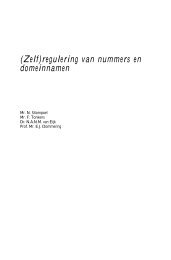
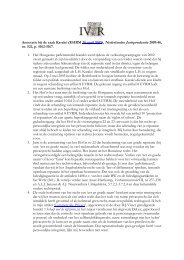

![Legal Opinion of Professor Egbert Dommering [1] concerning ... - IViR](https://img.yumpu.com/23603085/1/184x260/legal-opinion-of-professor-egbert-dommering-1-concerning-ivir.jpg?quality=85)
